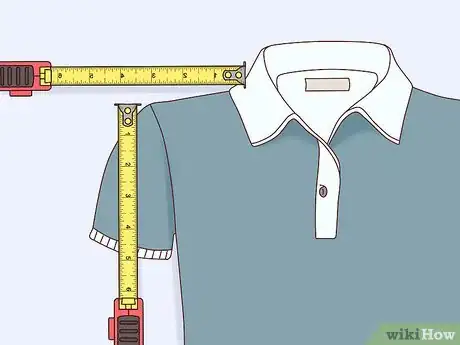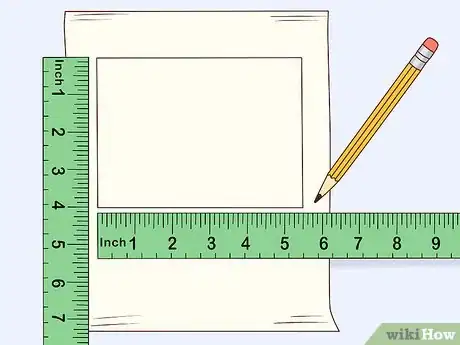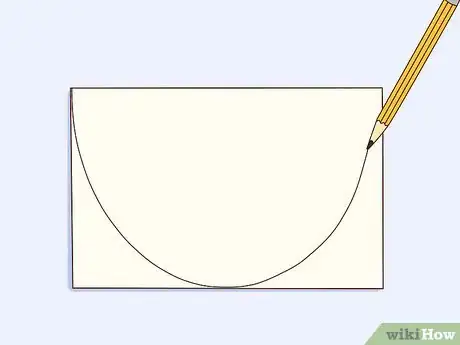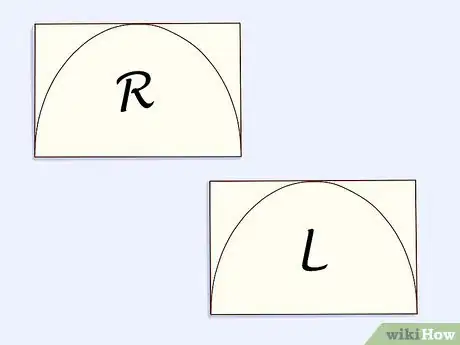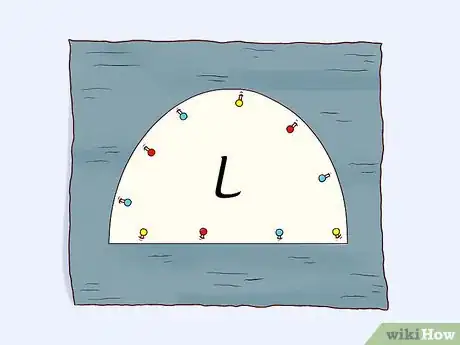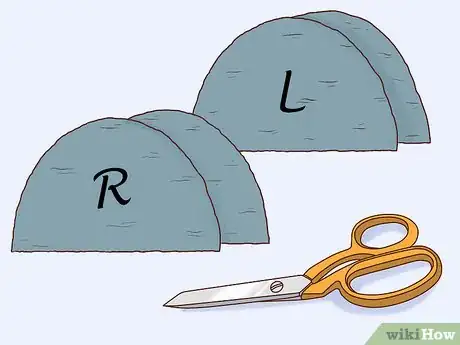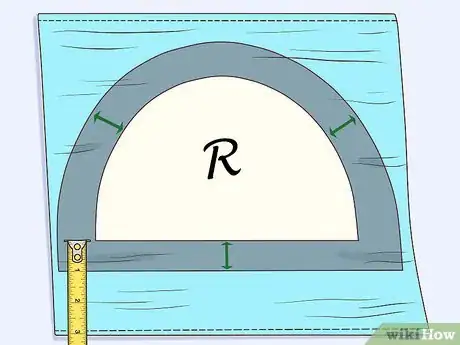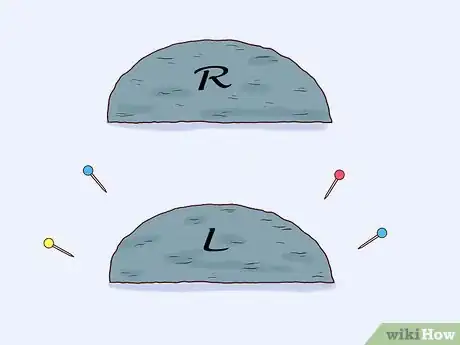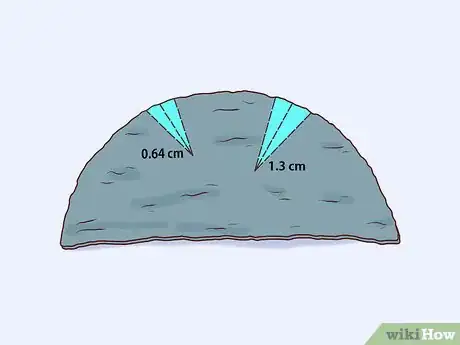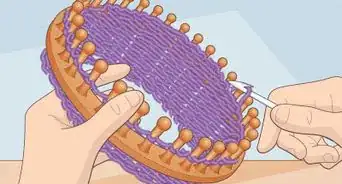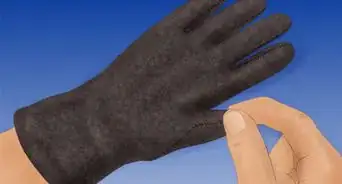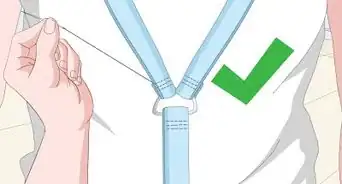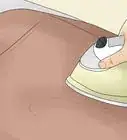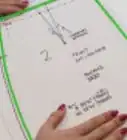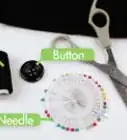This article was co-authored by Sherri Miller. Sherri Miller is a Seamstress, Costume Designer, and the Owner of The Scarlett Seam. With more than eight years of experience, she specializes in wedding gown alterations and has extensive knowledge in pattern-making. Sherri received an Associate of Science in Costume Design from Chaffey College.
There are 7 references cited in this article, which can be found at the bottom of the page.
wikiHow marks an article as reader-approved once it receives enough positive feedback. In this case, 100% of readers who voted found the article helpful, earning it our reader-approved status.
This article has been viewed 78,343 times.
Although shoulder pads are usually associated with bold 1980s fashions, they are regularly found in – and added to – many fashions of today. Suiting, blazers, and structured dresses and jackets can all get their shape from the addition of shoulder pads. With just a few materials, including lining fabric and quilters’ batting, you can create simple but effective shoulder pads to give your clothes a crisp and elegant line.
Steps
Creating a Pattern
-
1Measure the width and depth of the garment’s upper shoulder area. If you’re making shoulder pads to fit inside a specific piece of clothing, turn the sleeve inside-out and make sure you have access to the armhole and shoulder seams. Use a tape measure to determine how wide and deep the shoulder pad will need to be to fit within this area.
- If you’re not working with a specific garment, measure over the curve of the top of your shoulder. You’ll also want to measure the width of your shoulder, starting from where you want the shoulder pad to sit inside a garment and reaching out as far as you’d like the shoulder pad to extend.
- For example, a your measurements could be 5 1⁄2 in (14 cm) wide by 4 in (10 cm) deep.[1]
- You want to make sure that the width from your neck to your shoulder or your armhole area is the same as what your shoulder pad is.
-
2Draw out a rectangle on paper using the width and depth measurements. This will form the basis for your shoulder pad pattern. Since you’ll be reusing it a few times, choose a stiff cardstock or butcher’s paper to draw your pattern on. Sketch out a rectangle using the shoulder area measurements you just took and make note of which lines indicate width and depth.
- For example, if the measurements you took were 5 1⁄2 in (14 cm) wide by 4 in (10 cm) deep, your rectangle will be 5 1⁄2 in (14 cm) by 4 in (10 cm).
Advertisement -
3Sketch a “D” shape within this rectangle to create the shoulder pad pattern. For a standard shoulder pad, your pattern will be an arch or “D” shape, with a little more volume towards one side. Turn your rectangle so that the edge drawn to the depth measurement sits parallel to you. Sketch in a curved line that extends from the top left corner, skims across the center of the right side of the rectangle and connects back to the bottom left corner. This will be the finished edge of your shoulder pad pattern.
- The side with a little more volume will be positioned towards the back of your shoulder area. If you’re drawing a true “D” shape, the fullness should be on the bottom half. This will be worn on your right shoulder.
- Use a French curve to get the smoothest possible line.
- The “D” shape is standard, but you might want a slight variation of this to achieve different results. If you want the shoulder pad to add more volume directly above your shoulder and extend a little beyond, sketch more of a circular shape. If you would rather have less volume directly above your shoulder, carve out the vertical line in your “D” shape so it’s more of an arch or moon shape.
-
4Label both sides of the pattern piece to indicate the right and left shoulder pads. Write “R” on one side and “L” on the reverse so that you’ll know which shapes are intended for the right and left shoulders. If you’ve drawn a true “D” shaped pattern, the top side will be “R” and the reverse will be “L.”
- If you prefer, you can draw out 2 separate patterns instead of using 1 piece of paper for both right and left shoulder pads. To do this, flip over the original pattern piece onto another sheet of paper and trace around the edges. Both pieces should be mirror images of each other.
- You can also make your shoulder pads symmetrical, in which case you won’t need to mark the right and left sides.
-
5Cut out the pattern piece with paper scissors. Cut carefully around the curved edges so you don’t end up with any wonky edges on the finished product. Make sure to use paper scissors because cutting stiff paper will dull the edges of your fabric shears.
Cutting out the Batting and Fabric
-
1Trace the right shoulder pad pattern onto quilters’ batting twice. Pin the paper pattern onto a piece of quilters’ batting, with the “R” side up. With a fabric marker or pencil, trace around the edges. Label the piece of batting “R.” Repeat for a second piece.[2]
-
2Trace the left side onto batting twice and cut out all 4 pieces. Flip the pattern piece over so that the “L” side faces up. Pin the paper pattern onto quilters’ batting and trace around the edges before labeling this piece “L.” Do this a second time so you end up with 2 pieces labeled “L."[3]
-
3Cut all 4 pattern pieces out with fabric shears. Carefully cut around each pattern piece that you traced with sharp fabric scissors. You should end up with 2 separate pieces that are labeled "L" and 2 other pieces labeled "R."
-
4Trace the pattern onto fabric, adding 1 in (2.5 cm) seam allowance. Pin your paper pattern onto the wrong side of a piece of lining fabric. Then, trace around the pattern piece. Use a ruler to mark 1 in (2.5 cm) of seam allowance around the entire piece. Do this once for the “R” side and once for the “L” side.
- The lining fabric you choose should match the fabric on the inside of your garment. If you’re working with a red blazer that’s lined in black fabric, you should select a similar black fabric to use for covering the shoulder pads.
Constructing the Shoulder Pads
-
1Sandwich 2 layers of batting together and pin them. Pair up the matching “R” and “L” pieces and pin them together. This will create a thicker shoulder pad that has 1 layer of batting.
- If you want your shoulder pads to have graduated thickness, cut out a series of progressively smaller pieces. Use fabric spray adhesive to secure the pieces together in a stack. You’ll place another full-sized piece of batting over the top to smooth over the levels.[4]
-
2Use a sewing machine to straight stitch around the edges of the stack. Sew a straight stitch around the perimeter to hold the layers of batting together.
-
3Mark 2 darts on the curved edge of the batting. The first dart will take in 1⁄4 in (0.64 cm) and the second, larger dart will take in 1⁄2 in (1.3 cm). The larger dart should go on the side with more volume which will be positioned towards the back of the shoulder. They can both be about 2 in (5.1 cm) deep. Mark these with a fabric marker or pencil.[5]
-
4
-
5Fold and pin the seam allowance of the lining fabric over the batting. Place the batting onto the wrong side of the corresponding “R” and “L” pieces of lining fabric. Position it in the center and begin folding the 1 in (2.5 cm) seam allowance toward the inside. Pin around the edges. The lining fabric should now be enclosing the edges of the batting.
- Take care in folding around the corners so that the seam allowance doesn’t stick out or add too much bulk.
-
6Machine sew around the perimeter of the shoulder pads. Sew a straight stitch 1⁄4 in (0.64 cm) away from the folded edge. Now, your lining fabric should be totally enclosing all edges of the batting.[7]
-
7Trim away the raw edges of the lining fabric. Trim away the excess seam allowance. If you have pinking shears, use these when trimming away the seam allowance so that the raw edges of the lining fabric won’t fray. Your shoulder pads are now ready to whip stitch into the garment of your choice![8]
Expert Q&A
-
QuestionHow can I make my shoulder pads smaller?
 Sherri MillerSherri Miller is a Seamstress, Costume Designer, and the Owner of The Scarlett Seam. With more than eight years of experience, she specializes in wedding gown alterations and has extensive knowledge in pattern-making. Sherri received an Associate of Science in Costume Design from Chaffey College.
Sherri MillerSherri Miller is a Seamstress, Costume Designer, and the Owner of The Scarlett Seam. With more than eight years of experience, she specializes in wedding gown alterations and has extensive knowledge in pattern-making. Sherri received an Associate of Science in Costume Design from Chaffey College.
Seamstress & Costume Designer Cut down the shoulder pads and then sew them back in! A lot of shoulder pads are made of foam, so you can just shave down the material a little bit and sew them back in with a surge or zigzag stitch. You can also remove the shoulder pads completely—that's a really popular trend right now.
Cut down the shoulder pads and then sew them back in! A lot of shoulder pads are made of foam, so you can just shave down the material a little bit and sew them back in with a surge or zigzag stitch. You can also remove the shoulder pads completely—that's a really popular trend right now. -
QuestionHow can I remove shoulder pads from a blazer?
 Beth H.Community AnswerIf you have a seam ripper, use this to take it apart. You will need to pay close attention so that you don't rip your blazer. When sitting, place your blazer on a table inside out. Take the shoulder pad and find where it meets the blazer. There should be tiny stitches, usually zigzag ones, that you can start using your seam ripper on. If you don't have a seam ripper, you can try using a small knife.
Beth H.Community AnswerIf you have a seam ripper, use this to take it apart. You will need to pay close attention so that you don't rip your blazer. When sitting, place your blazer on a table inside out. Take the shoulder pad and find where it meets the blazer. There should be tiny stitches, usually zigzag ones, that you can start using your seam ripper on. If you don't have a seam ripper, you can try using a small knife. -
QuestionHow do I attach shoulder pads to my blouse/shirt?
 Beth H.Community AnswerYou can use medium sized safety pins. Pin to the shoulder pad and then pin to the coat, shirt etc. You also use double sided Velcro; there are strips that you do not need to sew on. It works like double sided tape.
Beth H.Community AnswerYou can use medium sized safety pins. Pin to the shoulder pad and then pin to the coat, shirt etc. You also use double sided Velcro; there are strips that you do not need to sew on. It works like double sided tape.
Things You'll Need
- Lining fabric
- 12 in (30 cm) x 12 in (30 cm) piece of quilters’ batting
- Sewing machine
- Fabric scissors
- Fabric marker or pencil
- Pins
- Thread
- Serger (optional)
- Pinking shears (optional)
References
- ↑ https://www.burdastyle.com/techniques/make-shoulder-pads/technique_steps/1
- ↑ https://www.burdastyle.com/techniques/make-shoulder-pads
- ↑ https://www.burdastyle.com/techniques/make-shoulder-pads
- ↑ https://youtu.be/-cMMpri3mC0?t=33
- ↑ https://www.burdastyle.com/techniques/make-shoulder-pads/technique_steps/2
- ↑ https://www.burdastyle.com/techniques/make-shoulder-pads/technique_steps/3
- ↑ https://www.burdastyle.com/techniques/make-shoulder-pads/technique_steps/7
- ↑ https://www.burdastyle.com/techniques/make-shoulder-pads/technique_steps/7
- ↑ https://youtu.be/PfQYq3UyHrA?t=128
